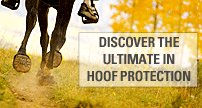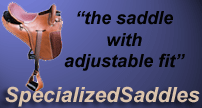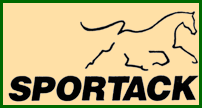
South Africa - ArrivalSouth Africa - I arrived today. Relayed to the Windhoek airport(Jan-Linki-Mike), easy flight over the very very vast lands of Namibia and South Africa - to the beautiful city of Capetown - boxed in by the bay and Table Mountain, the city squeezing out to the wine country as the population grows. Corny and Adri picked me up (Corny De Villers is the Pres. of the Ground Jury, Adri is apprenticing for an FEI official) - loaded my stuff into Corny's aged (but still going strong) Mercedes, a smooth drive out of the city, past rows of shanty towns - truly nothing more than boxes and shacks where many of the blacks live. Apparently the government brought in thousands of impoverished blacks from neighboring countries in decades past to boost the population for a favorable vote (politics) - and now these people are still poor and disenfranchised and are voting against the government. (politics). It's beautiful countryside - once we got out of the city Corny drove us into the farm land - rolling green fields of wheat, canola and miles and miles of vineyards. On leaving the airport (within seconds of closing my door) Corny asked me 'so what do you like to drink?' - not even 'do you like to drink anything?' - these folks seem to take their drinks and social time pretty seriously. So being a great fan of red wine, I was in luck - and the first stop we made was the Durbanville Winery - where we first tasted the 2004 wines - Shiraz, Merlot, Cabernet Sauvignon, Pintage (a South African grape) - tough to choose, very very nice wines - but we setted on the Merlot and headed back into the countryside. More winding roads through beautiful rolling fields, and we arrived at Charmaigne's Eksteen's farm. Charmaigne is the organizer of the Saldanha ride. I'll be staying here tonight, then driving to Saldanha bay with the group tomorrow morning early. Dinner (from Woolworths), drink and talk (Afrikaans and English) and early to bed tonight. I'll be taking pictures (and also riding!) and will try to send posts if I can, but the only internet will be from mobile phone modems - so I'm not sure how much (if any) I'll be able to do. New adventure, new people - but these women are 'endurance' - the same around the world, and I felt immediately at home and comfortable with the chatter about horses and rides and FEI and all that stuff.. later-
-later,
Steph
There are some interesting differences (as well as similarities)between endurance in South Africa and the USA (and other parts of the world). They've been doing some form of Endurance since 1965. The father of Maurius de Swardt (the folks who gave me a horse to ride) actually organized the first 'marathon' for horses 31 years ago. Maurius was just a boy, but remembered it well. The rules have certainly evolved since then, but the riders and horses and spirit have been alive and well in SA for quite some time. Namibia and Botswana are also doing Endurance - both National (club - e.g. AERC) and FEI. These three countries are the only countries currently competing in the southern part of Africa... though Rojan said that Maritius (on the east coast - a major quarantine and export country for horses in Africa) is also thinking of doing a ride. I told him to give them my name :) There are several siginificant differences. One - both Namibia and South Africa have a qualification system in place. I think Namibia has stricter qualifications than SA, but basically the horses have to do x number of 60km rides (in Namibia it's 3) and then x number of 80km rides before they can move up to either 120km or 160km rides. Since there aren't that many rides in southern Africa, and folks have to travel fair distances to attend rides, this typically takes 2 seasons. So horses that are entered in 120km or 160km rides usually have a base of 2 years on them. Two - the rides often have a cut off time. For the 160km, the cutoff was 14 hours ride time. The 80km also had a cutoff - maximum ride time was 8 hours. (Trilby would have to hurry a little over here). They do not polk along like we often do in the USA. Rojan and I rode the 80km ride, this was his horse's first 80km ride and he was 'taking it easy'. Our ride time was 6:45 - maximum would have been 8:00. Still a pretty good clip. I think the winning time was around 4:30 on a fairly flat and easy course. Three - the National club keeps log books for every horse (at least this was the case in SA - I think it's the same in Namibia). Every ride is recorded, including eliminations for lameness or metabolics. The books also contain vaccination records similar to FEI passports, and horses must be keep current on their vaccinations, just like FEI. (the rider is issued a 'warning' if the vaccinations are out of date, or ID diagram incorrect). Four - they still run some National rides with an Open Gate system. (though Namibia has almost gone entirely to FEI rules - same as AERC basically). This is more common in South Africa, but some think this will eventually change too. They come into the vetgate - and after they cross the line the horses have 25 minutes to recover. They don't even present to the vet until 25 minutes after they come in. At 25 minutes, they present, (if not recovered they are eliminated) - and then they have another 25 minutes of hold before leaving. Similarities - One - like the USA - they have weight division categories in addition to overall placement - light, standard, heavy. Plus Junior/Senior category. They are also very big on Team competitions - typically the clubs from the different regions field a team. Two - except for the remnants of the Open Gate system in SA, they run the same rules, basically the same as FEI. They also do drug testing. They also have year end awards - sometimes based upon points and rides ridden, as well as judged awards 'most improved', etc. And finally - they are friendly and supportive and will do anything to help each other out. This is the same the world over I think. It is very much a family sport here, plus a smattering of hired men doing the actual competing (e.g. Franz at Walvis Bay, and Willa at Saldanha). Men or boys who ride for the owners, for the farmers. It's the same sport - but the most notable difference that I've observered is not beween SA/Namibia/Botswana and the rest of the world, but between the USA and the rest of the world. Certainly we have some very competitive rides - and probably more competitive on the East coast than the West. But we also have a very strong 'recreational' sport in the USA - miles and completions and riding simply for the scenery. This is something that I haven't seen elsewhere, at least not to this degree. (but I think it's a good thing to have this range - this depth - in the sport) -later Steph
The Saldanha Ride
But anyway - the ride-
Past the lighthouse we came to the Atlantic coastal side - giant waves rolling onto the coast to crash up against cliffs and rocks - a spit of land off the shore, rock covered, crashing waves. It was SOOOO beautiful!! I was carrying a borrowed camera (thanks Lieber!) fairly low quality, and Princess was trotting so strongly that I could only afford one-handed shots, and no zoom. So the pictures really don't do the landscape justice.
The wildflowers were spectacular... bright yellow carpets, smatterings of pink and purple, grasses and waxy vegetation of all varieties of green. And on occasion we wound through some of poorer neigborhoods. It was a little grim in some places to see what people were actually living in... but the kids came out and waved, the adults watched quietly for the most part. There was one place with 50 or so adults crowded around a radio blaring the Rugby game (South Africa Springboks vs . ?) The Springboks lost... not a happy thing. We had a nice, successful ride - both horses kept strong all day, challenging each other. Both finished fine, it was just right to have done 80km rather than a longer distance. Maurius and Anida and friends crewed for us, (as well as for Willa on the 160km ride, and another boy on his first ride - 120km on Marius's stallion). All finished, a good day. The vetting, the timing, all that stuff was done perfectly. Well organized, well conducted. Great ride! I am so thankful to all these folks for taking me in - and really showing me a good time. (and believe me, these folks know how to have a good time :) Steph Endurance and South Africa Politics The following is correspondence from a fellow Endurance rider, and my response: Hi Michele - I was very aware of the racial 'tension' while in South Africa - less so in Nambia where apartheid was abolished 30 years ago - but still apparent. Throughout the world the legacy of imperialism and colonialism has left it's mark - our own history of slavery and displacement of native people is not pretty... and we (USA) still have our share of racial tension. It seems to me that the sport of Endurance, with it's International reach, and it's purity - it's a race - and relative lack of politics, is in a unique position, an opportunity to bridge some of the racial and political tensions that penetrate our societies. At the World Championship in Aachen - there were riders from the Middle East, riders from Russia, riders from Europe, from the tropics, from Africa... one of the riders from Malaysia was actually a groom, who in his homeland had a fairly low social status but in Aachen was privy to the highest social status - a rider - and was given the premium accomodations by the Organizing Committee. One of the South African riders was a colored - son of a Xhosa Bushmen mother - a worker on one of the farms who because of his talent and horsemanship was now a celebrated sportsman (both in Aachen and at home). Certainly we have a long way to go, but I find it very moving (this is probably what keeps drawing me around the world) to see this 'coming together' of so many different nations and societies - in a common venue, a common sport. And the thing that differentiates this sport from so many other International sports, is our total and absolute dependence on another creature, the horse. Politics stop when the ride starts. Then it's about horsemanship, training and preparation, strategy, and ability. And a little bit of luck just to keep us humble!
Here's a link to a history of South Africa - very interesting reading.
I rode in the Owyhee's with Karen Steenhof the past 2 Saturday's and she told me you recently returned from So Africa. Having visited So Africa for a month long study tour in 1995 accompanying a group of Whitworth College students, I read your blog w/interest. Would you be willing to consider a couple of comments from me? I admire all you do and I hope you don't mind hearing my point of view. It's obvious that you had an Afrikaans (a white) tour guide, and naturally got the Afrikaners point of view. I am not an expert on So African politics or history, but I do have a couple of first hand observations from my trip to So Africa in 1995, from an American academic point of view. You wrote> "a smooth drive out of the city, past rows of shanty towns - truly nothing more than boxes and shacks where many of the blacks live. Apparently the government brought in thousands of impoverished blacks from neighboring countries in decades past to boost the population for a favorable vote (politics) - and now these people are still poor and disenfranchised and are voting against the government. (politics)." In 1995, prior to the 1st ever free election in So Africa-there were hundreds of thousands of black people living in townships and shanty towns. The largest shanty towns were just out side of Cape Town and Johannesburg. Those blacks who inhabited these slums were displaced, native South African's, who had been relegated to "townships" by the British and the Dutch "settler's (invaders?) a concept similar to the reservations that the predominately white European descent settlers in the U.S. relegated the subjugated native American population. After Apartheid officially ended, the blacks from impoverished townships migrated to the cities in hopes of jobs, that weren't a reality. Then they stayed in the shanty towns without means to return to their townships-where there was nothing anyway. These slums outside the cities could be compared to the "Hoovervilles" of the 1930's Dust Bowl days in the U.S. (remember "Grapes of Wrath") except on a much larger scale, with lines drawn racially. These people were definitely NOT "brought in" by the white government who were in power before 1995 and that had ruled So Africa for hundreds of years prior to Mandela's election in the country's 1st ever free election, where the blacks were finally allowed to vote. That explanation of the shanty towns simply defies logic. Remember the U.S. put considerable economic pressure on So. Africa to end Apartheid by refusing to trade with them until it ended. When I was there, trade was only barely beginning to open up, even the very wealthy whites didn't have modern appliances, as the Western world was not trading with them. But who needs an electric washing machine, when you have a black or 'colored' maid who will do your wash for pennies? Eventually though the technology of the modern world, who was turning a blind eye to So. Africa, was tantalizing to enough people to want change. You wrote: "the ANC- that wants control and racial dominance, but doesn't quite grasp the need for economic stability and productivity that was the white - Afrikaans legacy." The Afrikaans legacy of economic stability and productivity was for the whites only, built on the backs of the native people. If your perspective of economic stability is for the whites, less than 10% of the So African population, then there was plenty. I have a box of slides and journal entries to remember what So Africa was like prior to the ANC. I would be happy to share them with you someday, if you are interested. I do know So Africa is one of the most beautiful countries in the world. It's a place I would love to return to one day. I wish I had more expertise to offer you in the history and politics of this amazing place. I have only a bit of information and my experience. ~Michele
Michele Unsworth |
Contact steph@endurance.net to publish Saldanha photos, updates on this website!
| || Back to Coverage || | || Back to Endurance.Net || |
Event Coverage Sponsorship:
 |
 |
 |














